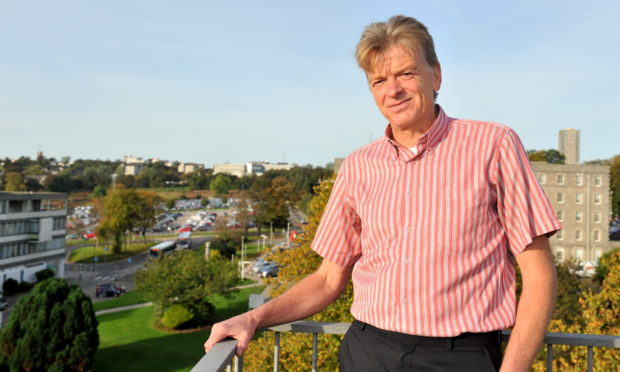A former medical director has claimed a “fear of retribution” stopped doctors from working in the best interests of their patients during the pandemic.
Dr Roelf Dijkhuizen said clinicians, especially towards the start of the outbreak, were too afraid to use their own judgement and overrule government guidelines.
And yesterday, he accused NHS Orkney of “squandering” opportunities to better tackle the pandemic.
Dr Dijkhuizen, who was NHS Grampian’s medical director until 2014, resigned from an advisory role at NHS Orkney in June – primarily over its handling of the situation.
The doctor, who has a background in infectious diseases, spoke via video-link yesterday as part of Deveron Projects’ series of Friday lunchtime talks.
“The organisation as a whole, and many NHS organisations, were too afraid to be honest with the public, make a mistake and be held to account for it,” he said.
“The guidelines were so confusing and everyone thought they may be punished for not following them, but people forgot they had their own duty.
“It was really quite a bruising experience – this fear of retribution is paralysing them.”
Initially, clinicians were only able to authorise coronavirus tests for people who were actively showing symptoms – a move Dr Dijkhuizen disagreed with.
He said this led to people being discharged from hospitals and sent to care homes, potentially spreading the disease throughout the community.
Dr Dijkhuizen said: “In the first week of March, as we were preparing the (Balfour) hospital, we were sending out older people, frail people, to care homes to free up beds.
“Nobody knew how many beds we’d need – and in the end we didn’t need them.
“But these people were being sent out without testing, and I thought ‘you can’t do that because they might infect others’.
“I said ‘you must test’, but they said it’s not within the guidelines, as they’re not symptomatic.”
The doctor described one incident where he began shouting at a colleague because they would not authorise tests.
This led to him bypassing the system and instructing a doctor to send away a sample on his behalf – something he was later chastised by the health board’s medical director for.
Dr Dijkhuizen said: “I was trying to use professional judgement, as a doctor, for the safety of the people around me.
“People were so paralysed by rules and regulations and petrified to do anything that would fall outside them.
“This has bedevilled the management of the epidemic.”
At the start of the pandemic, the doctor said all eyes were on the health service for advice and guidance, but NHS Orkney “squandered” the opportunity.
He added: “We were not allowed to tell people how many tests we were doing, or how many we believed may have the disease.
“We couldn’t have any dialogue with people who were very anxious and were losing their business because they were closed – sacrificing everything to contain the epidemic.
“It was this lack of courage and leadership that led to me resigning.”
Last night Michael Dickson, the chief executive of NHS Shetland and Orkney, said there had been been differences in approach to Covid-19 between the two boards.
He said the pair have had lengthy discussions about these, adding that he was “genuinely sorry” to hear of Dr Dijkhuizen’s resignation.
Mr Dickson said: “There are always opportunities for us to look back and learn from events.
“If we had known what we knew going into the pandemic, we might have done things differently.
“The testing regime is based on the NHS and Scottish Government guidance, and it’s not unreasonable for a health board to follow the rules required of it.
“On the whole, they have served us well.”
A pandemic like no other
Dr Dijkhuizen said the public reaction to the pandemic was unlike anything he had seen in his career.
The doctor praised the “solidarity” of people, who were determined to stay and home and protect one another from coronavirus – describing their actions as “quite beautiful.”
He also had praise for the selfless medical workers who were prepared to potentially put themselves in danger for the good of others.
“The last few months we have all suffered from Covid-19, whether we have had the disease or not,” he said.
“At the start, people didn’t listen to anybody else but the NHS – they didn’t have time to listen to politicians or the pharmaceutical industry.
“Everyone seemed to be staying at home and protecting each other, it was quite unbelievable.
“With Covid-19 it was very special as people were willing to transfer themselves to areas with risks they didn’t even know about.
“There was this almost holy duty as an organisation to protect the people that were working for us.”










